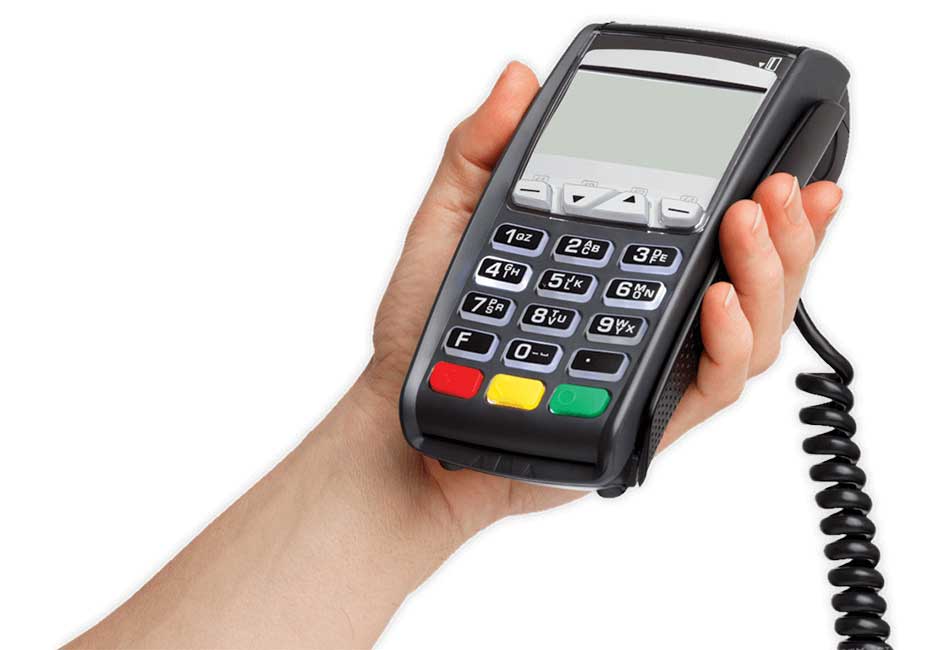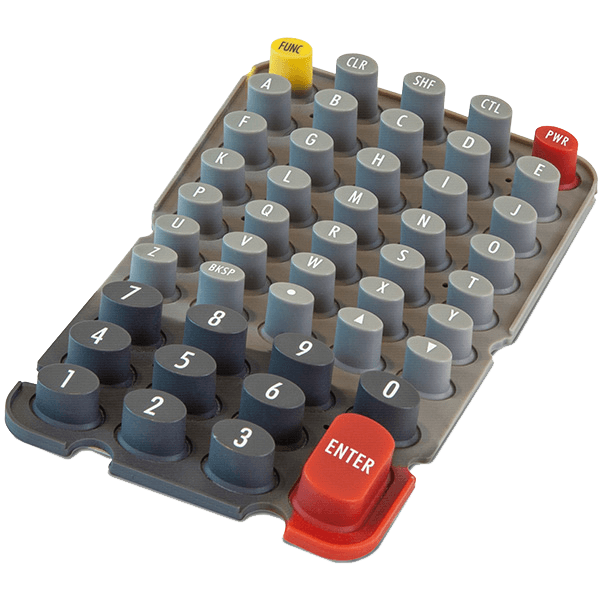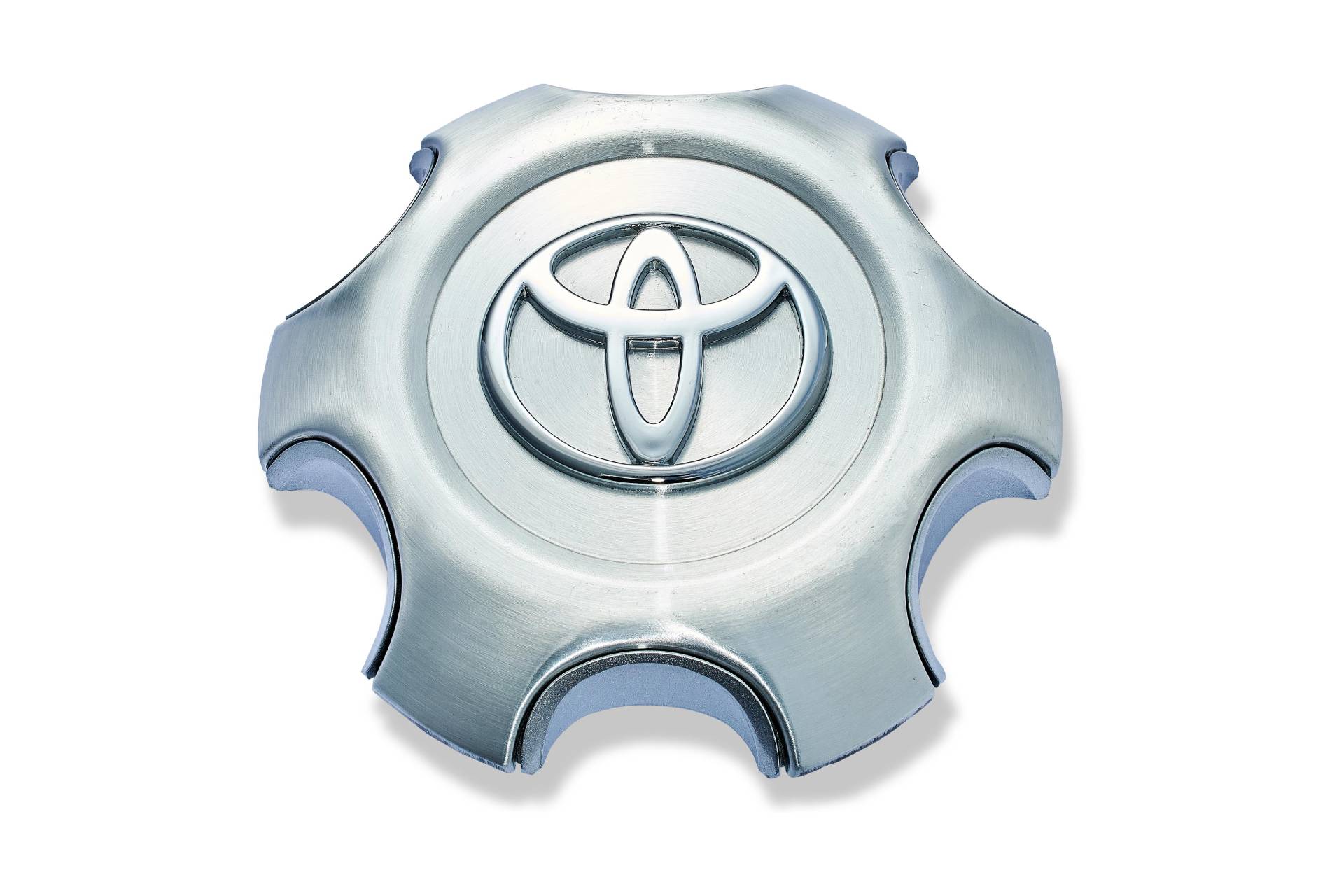How additives boost the performance of Rubber Keypads
A Comprehensive Guide to the Production and Handling of Rubber Keypads for Optimum Efficiency
The production and processing of rubber keypads play a crucial duty in their efficiency and usability. Material selection, style precision, and advanced manufacturing methods greatly affect their resilience and effectiveness. Recognizing these aspects is important for developing premium products. As numerous technologies emerge in this field, discovering their implications might disclose new criteria for performance and individual experience. What essential facets will shape the future of rubber keypads?
Understanding Rubber Keypads: Products and Types
Rubber keypads are important components in plenty of devices, using an equilibrium of longevity and responsive responses. These keypads are mainly made from silicone or artificial rubber, materials selected for their versatility and resilience. Silicone rubber, specifically, is preferred for its excellent temperature level resistance and long life, making it excellent for numerous applications, from customer electronics to industrial machinery.
There are a number of kinds of rubber keypads, consisting of dome switch keypads, which make use of a dome-shaped system that offers tactile comments when pressed. Additionally, there are additionally flat keypads, which include a smooth surface area and are frequently made use of in remote controls and medical devices. The option of product and type affects the keypad's efficiency, really feel, and overall individual experience. Understanding these aspects is essential for designers and makers intending to produce reliable and dependable user interfaces in their products.
The Manufacturing Process: From Design to Manufacturing
The manufacturing process of rubber keypads entails numerous important stages, starting with layout and finishing with manufacturing. Developers produce in-depth specifications and prototypes, guaranteeing the keypad fulfills practical and aesthetic needs. Computer-aided style (CAD) software program is frequently used to picture the design and functions before proceeding.
When the layout is wrapped up, material choice is essential, with options typically consisting of silicone or all-natural rubber. In the following phase, mold and mildews are developed based on the accepted layouts, which will form the keypads throughout production.
Complying with mold creation, the manufacturing stage starts, where rubber is blended with ingredients to boost efficiency. The combination is after that poured into molds and based on warm and pressure, enabling it to treat and strengthen.
The finished keypads go through top quality checks to confirm they meet well-known requirements, complied with by product packaging for distribution. This comprehensive procedure guarantees peak efficiency in the final item.
Trick Techniques in Rubber Molding
In the domain of rubber keypads, various molding methods play a critical duty in establishing the top quality and capability of the final item. One common approach is compression molding, where raw rubber is placed in a warmed mold and mildew and pressure is applied, enabling reliable mass manufacturing and uniformity. Another significant technique is shot molding, which entails infusing warmed rubber into a mold and mildew, offering higher accuracy and complicated shapes. Transfer molding, a crossbreed of both methods, is additionally made use of, specifically for intricate styles, as it integrates the advantages of both procedures. Additionally, fluid silicone rubber (LSR) molding is obtaining grip as a result of its flexibility and durability, making it excellent for high-performance applications. Each technique has special qualities, affecting variables such as cycle time, material waste, and manufacturing costs. Selecting the proper molding strategy is crucial for attaining peak performance in rubber keypads.
Surface Finishing and Texturing Options
Surface finishing and texturing options play an essential duty in boosting the tactile experience and visual allure of rubber keypads. Suppliers use numerous methods to produce unique surface area attributes that influence individual interaction and item layout. Typical completing approaches include matte, shiny, and satin surfaces, each using various aesthetic effects and grasp degrees. Texturing choices, such as raised patterns, grooves, or stippling, even more boost functionality by boosting grip and minimizing slippage throughout usage.
Furthermore, particular structures can be tailored to satisfy ergonomic demands, supplying convenience during long term use. The selection of surface finishes and appearances can be influenced by the designated application of the keypad, whether it be for customer electronics, vehicle controls, or commercial gadgets. Ultimately, careful factor to consider of these choices adds significantly to customer fulfillment and total item performance, making them critical aspects in the layout and production procedure of rubber keypads.
Quality Assurance Actions in Rubber Keypad Manufacturing
Quality assurance actions in rubber keypad manufacturing use this link are essential for ensuring item integrity and performance. These measures include material option requirements, extensive testing procedures, and rigid final evaluation requirements. Together, they develop a thorough framework that assists suppliers promote top quality throughout the production procedure.

Product Selection Standards
Picking the suitable materials for rubber keypads is vital, as it directly impacts their user, sturdiness, and performance experience. Secret requirements for material selection consist of tensile strength, durability, and environmental resistance. The choice of rubber substance, such as silicone or polycarbonate elastomer (TPE), plays an essential role in achieving wanted responsive feedback and durability. In addition, aspects like chemical compatibility, temperature stability, and UV resistance should be taken into consideration to assure maximum efficiency in various applications. Producers ought to also examine the ease of handling and cost-effectiveness of products, stabilizing top quality with budget constraints. Ultimately, the right product option not just enhances the keypad's efficiency but additionally adds to general item top quality and consumer satisfaction.
Evaluating Treatments Implemented
After determining the proper materials for rubber keypads, extensive screening treatments are executed to validate that the last products fulfill market requirements and consumer expectations. These procedures generally consist of mechanical screening, which reviews the sturdiness and flexibility of the rubber under various conditions. In addition, ecological screening assesses the keypads' efficiency under temperature level fluctuations, humidity, and exposure to chemicals. Electrical testing verifies the keypads function properly with electronic elements, verifying responsiveness and conductivity. Furthermore, tactile feedback is assessed to guarantee customer satisfaction. These extensive testing measures are crucial in determining any kind of problems or inconsistencies before automation, eventually boosting the integrity and performance of rubber keypads in their desired applications.

Last Assessment Standards
Thorough final inspection criteria are important in rubber keypad manufacturing to guarantee that each unit satisfies the specified criteria for capability and appearance. This procedure commonly includes aesthetic evaluations to determine any type of surface area defects, such as staining or blemishes. Furthermore, responsive analyses identify that the keypads respond properly to touch, maintaining the called for degree of sensitivity. Sturdiness examinations might additionally be conducted, replicating long term use to validate the long life of the keypad under different conditions. Adherence to industry regulations and client requirements is confirmed to keep quality assurance. By applying these strenuous examination actions, producers can substantially minimize the danger of problems, guaranteeing that the end product is trustworthy and satisfies consumer expectations, ultimately enhancing customer complete satisfaction.
Developments in Rubber Keypad Technology
As technology remains to develop, technologies in rubber keypad modern technology are reshaping user interfaces across various industries. One substantial innovation is the assimilation of capacitive touch sensing units within rubber keypads, permitting a much more flexible and responsive user experience. This technology allows customers to interact with gadgets through touch, enhancing capability without giving up the responsive comments that rubber keypads are known for.
In addition, renovations in product solutions have brought about the advancement of more sturdy, weather-resistant rubber, making keypads appropriate for outdoor and industrial use. Boosted printing strategies likewise permit for high-resolution graphics and backlighting alternatives, enhancing exposure and visual charm.

Furthermore, innovations in producing processes, such as 3D printing, are allowing custom styles and quick prototyping, improving manufacturing timelines. These advancements collectively contribute to extra reliable and easy to use rubber keypads, guaranteeing they satisfy the demands of contemporary applications while maintaining their core benefits.
Finest Practices for Style and Capability
Creating reliable rubber keypads calls for careful examination of both aesthetics and performance. Rubber Keypads. A well-designed keypad needs to stabilize ergonomic principles with aesthetic attract boost customer experience. Trick factors consist of dimension, shape, and spacing of buttons, guaranteeing they are easy to press while avoiding click for more info unexpected activation. Utilizing contrasting structures and colors can enhance visibility and tactile feedback, helping customers in comparing keys
Additionally, the option of materials plays an essential role; top quality rubber substances can boost durability and resistance to wear. It is additionally essential to consider the combination of features such as backlighting and custom graphics, which can boost use in different settings.
Prototyping and user testing are invaluable in the layout process, permitting for adjustments based on real-world comments. By sticking to these ideal techniques, producers can develop rubber keypads that not just look appealing but also fulfill the practical requirements of individuals successfully.
Frequently Asked Inquiries
Exactly how Do I Pick the Right Rubber Material for My Keypad?
To choose the ideal rubber product for a keypad, one need to think about factors such as resilience, ecological resistance, tactile comments, and compatibility with the designated application, making sure ideal performance and customer satisfaction in numerous conditions.
What Are the Environmental Effects of Rubber Keypad Manufacturing?
Rubber keypad production can bring about environmental impacts such as deforestation for all-natural rubber sources, pollution from chemical processes, and waste generation. Lasting practices and products can reduce several of these negative impacts on ecosystems.
Can Rubber Keypads Be Recycled or Recycled?
Rubber keypads can be reused, however the procedure depends on the particular materials utilized in their production. Reusing them in various applications is also possible, contributing to squander decrease and advertising sustainability in producing practices.
What Is the Average Lifespan of a Rubber Keypad?
The typical lifespan of a rubber keypad commonly varies from 5 to ten years, depending on usage, ecological variables, and maintenance. Regular care can prolong its capability, while too much wear might reduce its sturdiness.
Are There Any Health And Wellness Problems Connected To Rubber Keypad Products?
There are prospective health concerns connected to rubber keypad products, including allergic responses to particular chemicals and toxic irritants utilized in manufacturing. Correct handling and understanding of material composition can alleviate these dangers for users.
There are numerous kinds of rubber keypads, including dome switch keypads, which utilize a dome-shaped device that gives responsive comments when pressed. Picking the proper products for rubber keypads is necessary, as it directly influences their individual, functionality, and longevity experience - Rubber Keypads. After identifying the suitable materials for rubber keypads, strenuous testing treatments are executed her latest blog to validate that the final products fulfill market criteria and client assumptions. Rubber keypad production can lead to environmental effects such as logging for natural rubber resources, pollution from chemical procedures, and waste generation. Rubber keypads can be reused, yet the procedure depends on the particular materials made use of in their production